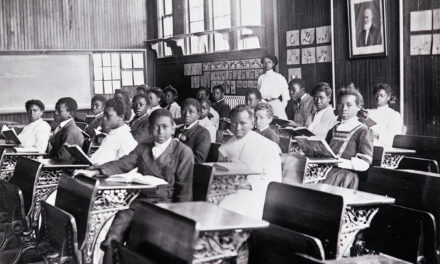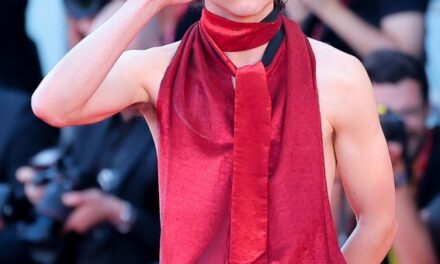
As a youngster, craftsperson Mohammed Zeitoun spent most of his time with his grandmother in the Galilee village of Najaf. He was fascinated by the woven trays she created and hung on the walls of the family home. Known as a tabaq in Arabic, these trays were made of wheat stems and used mainly for serving food.
“I asked her for a tray and she refused,” he recalls. “She told me: ‘Even if my own father rises from the grave, I’m not giving him a single tray.’”
This line would change his life. At age 19, he embarked on a journey into the world of wheat weaving. “I went to other women from my family and asked them for a tray, and was again refused. That pushed me into wanting to study weaving myself,” Zeitoun says.
In a new exhibition dedicated to the craft, “Blessing of the Wheat” (running at the Ein Dor Archaeological Museum in northern Israel until July 22), there’s a display of his work that perfectly encapsulates the world of Palestinian weaving in general, and wheat weaving in particular.
“It’s important to talk about the nature of the traditional crafts that are gradually disappearing. Our job is to grab this thing and preserve it,” says museum director and curator Tamar Shooval.
Exhibition co-curator Gali Kedar first learned about the craft during the COVID era, when she “visited villages in the Galilee in order to meet people – mainly craftspeople and artists. The deeper I delved, I discovered that craftspeople still exist, but only a few.” Kedar is also a tourism consultant and researcher of traditional crafts.
“I saw tabaqs hanging in homes as decorations, but I couldn’t find any women weaving with wheat stems. I was told the women no longer weave,” she says. “But in one of the streets on a tour in Nazareth, I saw a big, beautiful tabaq and realized that apparently there’s still someone continuing to weave.”
After much searching, she arrived at the home of Zeitoun in Najaf. “A huge surprise awaited me,” Kedar says of his work.
“In the Galilee, weaving is typically done by women, but in Gaza it’s known as men’s work,” explains Zeitoun. In his works, he not only recreates the craft that embodied the lives of Palestinian women in the villages, but also generates nostalgia for the land and cultural landscape.
An English teacher, 37-year-old Zeitoun grows the wheat on an area of about 2 dunams (half an acre) in a field near the village. He harvests the wheat with a sickle and arranges the straw in sheaves. He leaves some of it in its natural color and some he dyes by cooking it over a campfire with extracts of flowers and spices.
Weaving, he says, is only possible after soaking a sheaf of straw in water for an hour or two, so it will become soft and flexible. In Palestinian weaving, he adds, there are eight techniques, with braiding the most famous.
“Work on a white tabaq meant for everyday use doesn’t require a lot of time. On the other hand, the tabaq that includes designs and a combination of colors requires at least two weeks’ work,” he says.
He adds that in countries like Jordan, Lebanon and Syria, there are three techniques used for creating designs typical of the region. For example, in the Lebanese city of Sidon, they create tabaqs featuring designs of the sea and the city’s ancient walls.
Zeitoun is the only craftsperson in Israel who weaves from wheat stems the same way Palestinian women used to. So far, he has managed to recreate 26 types of wheat seed the Palestinians grew before the establishment of the State of Israel.
“The wheat grown today in Israel is engineered – it’s impossible to weave with that,” he sniffs. “I had to restore the traditional species, and was helped by the older women of the village who grew non-engineered wheat by themselves or saved the seeds.”
The materials used for weaving, he says, vary depending on availability. For example, in Gaza, men weave with the fronds of a palm tree. The combination of shapes and colors symbolized the spirit of the time. “The Palestinian woman took inspiration from her surroundings and from her everyday world. For instance, women included designs of roosters, doves and trees. Some of them included triangles and diamond shapes, which are considered a symbol of protection.” A colored tabaq was used by women on festive occasions such as weddings. A white tabaq was used for serving food.
The processes of industrialization and modernization that took place in Arab society, women’s improved status and their integration into the job market, along with the expropriation of agricultural land by the state, are the main reasons for the decline in weaving among Arab women.
Zeitoun considers his art part of the process of preserving Palestinian heritage. “I feel huge responsibility for passing what I taught myself to future generations,” he says. He aspires to have “Palestinian weaving” added to the UNESCO Intangible Cultural Heritage list, as was the case with Palestinian embroidery back in 2021.
Growing interest
Yonit Crystal is another artist working to preserve handicrafts, and her works are also featured at the Ein Dor exhibition. In her book “Generation to Generation: Traditional Basketry of Palestine” (in Hebrew), she wrote about traditional weaving methods that were once customary here but have almost entirely disappeared. She was able to preserve some of them after learning wheat-weaving techniques from Palestinian women.
In her opinion, “traditional Palestinian weaving hasn’t been documented, and integrating techniques and materials customary in modern weaving in Israel is likely to be confusing.” She adds that weaving baskets as a hobby and channel for artistic creation is becoming more common in Israel.
Crystal notes the two characteristics typical of Palestinian wheat weaving. First, the method of wrapping the wheat stem, allowing the designs to be created inside the tabaq. Second: women wove from the wheat stems they themselves grew in the fields.
In recent years, Israelis have become interested in weaving from wheat and other materials such as fronds from date and mastic trees, and weaving workshops in the Galilee attract people from all over the country. Crystal believes this is all part of the return to handicrafts.
She sees it all as a pendulum swing: the more industrialized that society becomes, the more people look for ways to connect to nature and reduce their hours spent in front of a screen. Weaving is a skill that’s easy to learn, she adds, which is why she thinks it’s growing in popularity.
For Kedar, meanwhile, “Interest in wheat weaving is growing because it’s an organic, accessible and inexpensive material. People are looking for a return to nature, to the land – and this is an opportunity to develop that as a hobby.”




